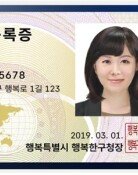RCEP to take effect in next January
RCEP to take effect in next January
Posted November. 05, 2021 07:32,
Updated November. 05, 2021 07:32
The Regional Comprehensive Economic Partnership, or RCEP, will come into force in January 2022, among 10 countries, including China and Japan. Japan is particularly excited about economic invigoration, with its GDP projected to increase by 2.7%. South Korea has signed the RCEP, but because it is yet to be ratified by the National Assembly, South Korea is not included in the list of countries where the RCEP will come into force.
“With the ratification of the RCEP by Australia and New Zealand on Tuesday, the requirements for the regional trade pact to take effect have been satisfied,” stated the Japanese foreign ministry on Wednesday. “From January 1, 2022, the RCEP will come into force in 10 countries, including Japan, China, Australia, New Zealand, Singapore, Vietnam, Thailand, Brunei, Cambodia, and Laos,” said the ministry. Five countries including South Korea, Indonesia, Malaysia, Myanmar, and the Philippines have not deposited the ratification instrument.
The regional free trade agreement includes tariff reductions to promote regional trade. Once all 15 signatories ratify the instrument, the RCEP will become the world’s largest FTA, bigger in size than the Comprehensive and Progressive Agreement for Trans-Pacific Partnership
(CPTPP), composed of 11 countries except the U.S. As of 2019, the RCEP covers a total trade volume of 5.6 trillion dollars (approximately 6,600 trillion won, taking up 31.9% of the world’s trade volume), a market of 2.27 billion people, roughly 29.7% of the world’s population, and 26 trillion dollars of GDP (30.8%). The RCEP is expected to generate significant economic benefits, as it is an FTA that is joined by South Korea, China, and Japan, as well as ASEAN, which has a huge growth potential.
“The RCEP will contribute more than ever to its economic development by connecting the world’s growth hub and Japan,” Chief Cabinet Secretary Hirokazu Matsuno, the Japanese government's top spokesperson, said in a press conference held on Thursday. “Japan will take the lead,” said Mr. Hirokazu.
The Nikkei reported that the first FTA signed by Japan with its counterparts South Korea and China will begin to take effect, stating, “[RCEP] is expected to increase Japan’s GDP by 2.7%.” The Yomiuri Shimbun stated that Nations joining the RCEP expect to see economic recovery; at the same time, China is being checked by other countries, as it tries to take the hegemonic position in trade in the Asia-Pacific region.
India deliberated on joining the RCEP, but it opted out of joining it out of concern that the RCEP would accelerate a flood of cheap Chinese imports, thereby exacerbating India’s trade deficit against China.
lovesong@donga.com







